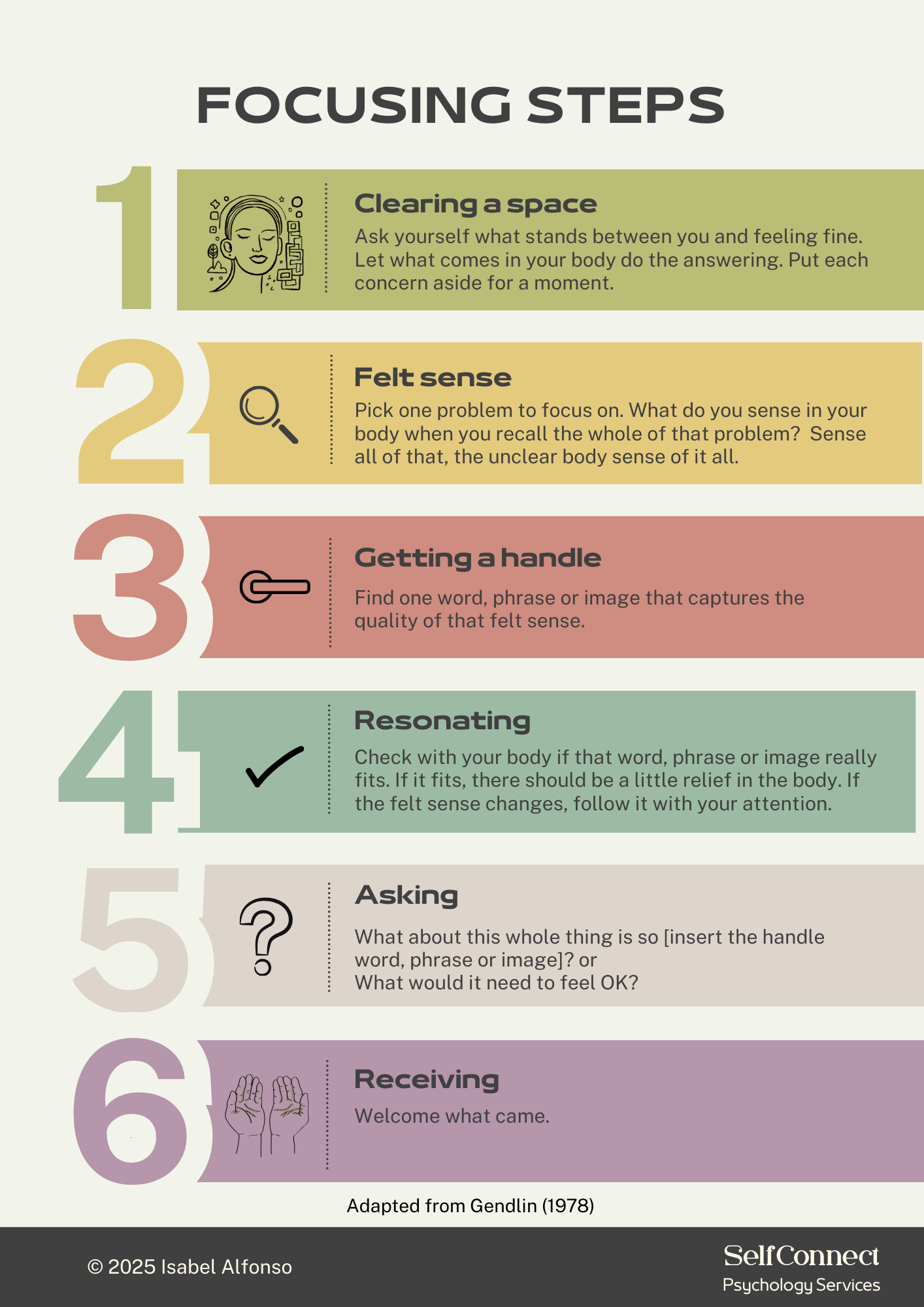
Somatic Therapy - Focusing
WITH PSYCHOLOGIST ISABEL ALFONSO
AT FRENCHS FOREST, IN SYDNEY’S NORTHERN BEACHES OR ONLINE
MEDICARE REBATES. NO WAIT LIST.
Gently connecting with your body’s wisdom so that you can find the way forward
What is somatic therapy?
Somatic therapy is a holistic approach to healing that focuses on the connection between the body and mind. It recognizes that emotional experiences can be stored in the body, leading to tension, pain, or other physical symptoms. Through a variety of techniques, somatic therapy helps individuals release stored trauma, manage stress, and improve overall well-being.
Traditional talk therapies engage only the mind, not the body, but in somatic therapy, the body is the starting point to achieve healing.
There are several modalities of somatic therapy. The approach I offer is called Focusing.
Focusing: an evidence based somatic therapy
Focusing comes from the pioneering work of philosopher and psychotherapist Eugene Gendlin at the University of Chicago, where he collaborated with Carl Rogers. Gendlin studied why some clients improved in therapy while others did not.
He found that successful clients were regularly checking inside themselves for a whole bodily felt sense of their situation. Gendlin then developed a 6-step process he called Focusing to teach this skill to others.
Here is a free resource you can download with Gendlin’s 6 steps to Focusing.
What is focusing?
Focusing is the process of checking deep within ourselves for a bodily felt sense of an issue and allowing the felt sense to unfold and guide us towards the next best step. Because the insight that comes from the felt sense “feels right,” the body releases some tension.
How does Focusing work?
The resolution of problems usually happens in small steps of contacting the felt sense, waiting for it to bring something new to our situation, and feeling a little release of tension. Therapeutic change feels good in the body, even if the issue we are dealing with is really painful.
Who could benefit from Focusing?
This approach may be a good fit for you if:
You feel stuck, anxious or emotionally overwhelmed
You have tried talking things through, but something still feels unresolved
You notice body signals like tension, tightness, or unease, and want to explore them safely
You want to connect more deeply with your own sense of what is right or needed
You are looking for a therapy that is respectful, experiential, and paced at your rhythm

